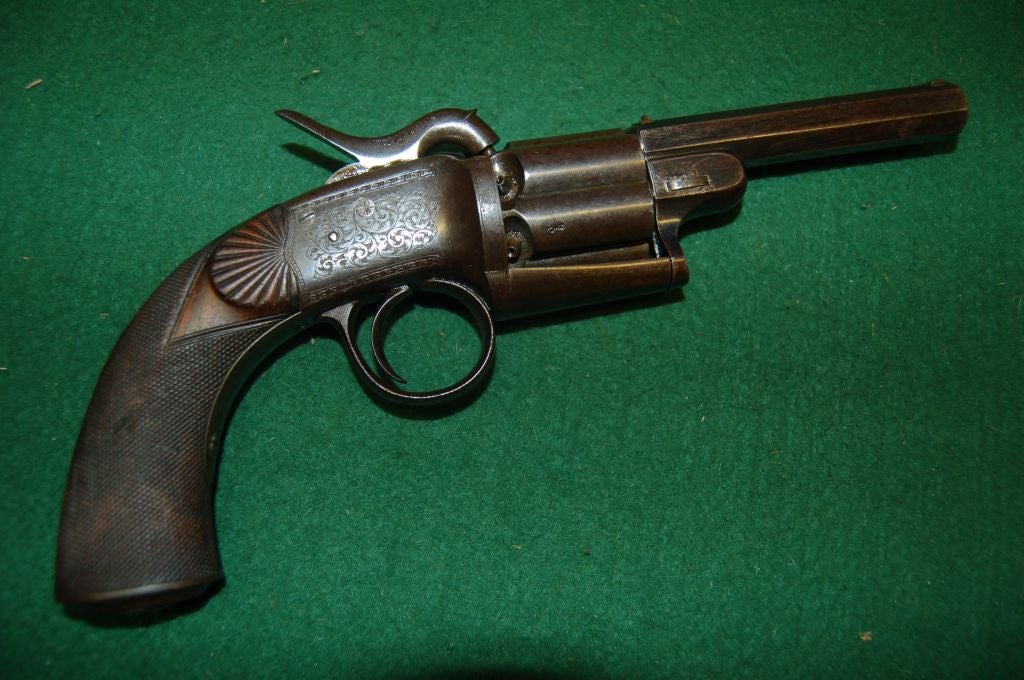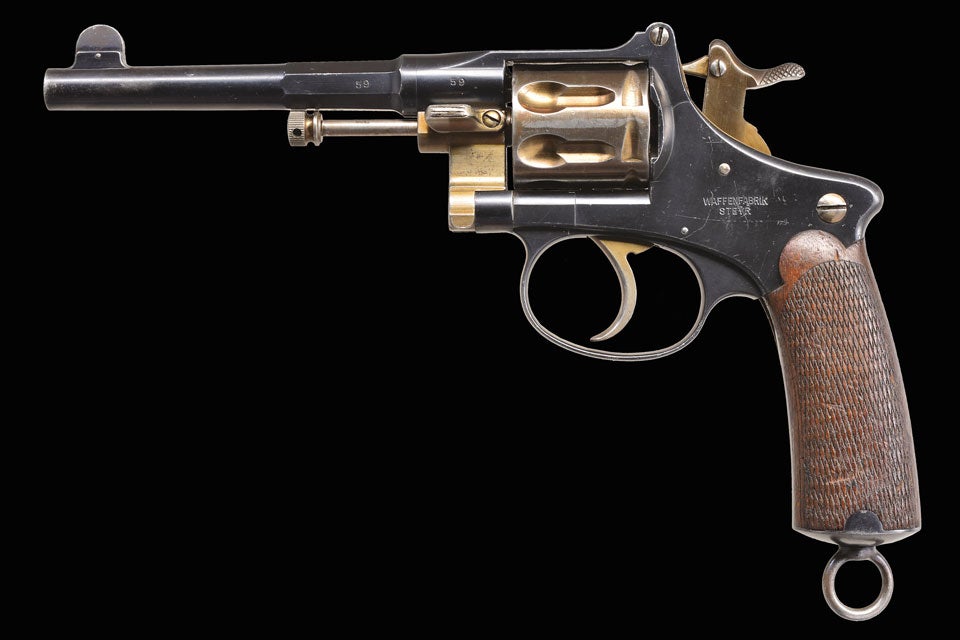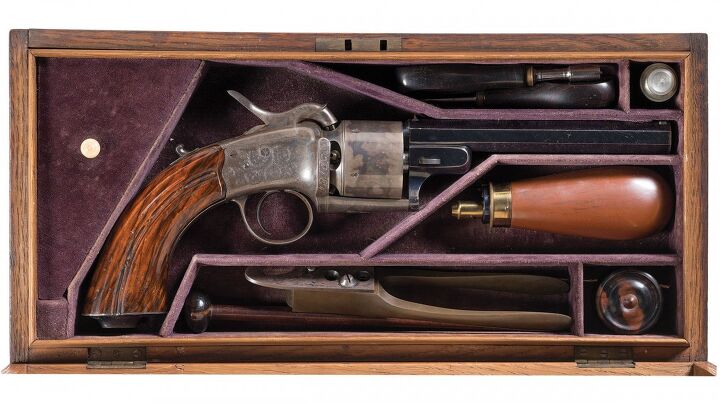Not So Fast, Nagant
When we think of a revolver candidate for a suppressor, invariably our mind drifts to the M1895 Nagant. A good revolver, to be true. Gas-sealed revolvers, however, were around far earlier, with the UK having a rich history of development in this type of firearms. What is a gas-seal revolver? In the case of most models in the 1800’s, gas sealed revolvers had a cylinder and barrel that fit together at the moment of firing via a flanged cylinder-coned chamber arrangement. Early gas-seal revolvers also usually had a projectile somewhat larger in diameter than the bore, to assure for a good seal behind the bullet as well.
Early Gas Seals
Two of the earliest gas-seal revolvers were the Lang and the Parker Field, both developed in the UK and first produced in 1840. The Lang has a two-stage cylinder rotation, whereupon at half-cock the cylinder was unmated from the barrel via the retraction of a spring, and at full cock the cylinder would rotate to the next chamber. The cylinder would lock with the barrel when the hammer fell. The Lang also featured an innovation of windage adjustable rear sights and a slightly offset hammer to not obscure the sight picture.

Lang Gas seal revolver
Image Credit: Guntrader
The Parker Field also had adjustable sights and featured a further safety innovation of flat shields between the percussion nipples. These shields would aid in the prevention of a chain discharge. The Parker Field also had an integrated rammer, ensuring the tight seating of the oversized projectile in the chamber.

Parker Field Gas Seal Revolver
Image Credit: Gunrestorationco.uk
Developments of the 1850s
The 1850s saw the introduction of the Baker and the Beattie in 1852 and 1855, respectively. The Baker featured a bar hammer and a sliding safety. The Beattie and the Baker also shared the feature of having the barrel attached by a flat axis pin, rather than been an integral part of the frame.
Gas sealed revolvers were significant in two ways: they provided an additional degree of safety to the prevention of a catastrophic chain fire, and they prevented velocity loss. How much this latter principle was understood in the mid-1800s is debatable, but with the .42 and .577in rounds trundling along at roughly 600fps, any velocity retention one could get was a positive.
The Late 1800’s

Mexican Contract Pieper Gas Seal Carbine
Image Credit: Rock Island Auction Company
By the late 1800s the Pieper revolver and Carbine, Steyr M1893 and Nagant M1895 were the standard-bearers of the gas-seal revolver concept. All three relied on the gas-seal solution for the cartridge age: An elongated case that extended beyond of the bullet to facilitate the gas seal.

Steyr M1893
Image Credit: Poulin Auction Company
Future Hopes
A modern gas seal arrangement would not only allow for more suppressed revolvers, but better velocity retention and a better degree of safety with high powered revolvers. Gone would be the days of destroyed bunny bags (and more unfortunately destroyed support hand digits) if powerful cartridges such as the .460 S&W could be somehow sealed off from high pressures gasses cutting out from the cylinder. More recent attempts haven’t done so well, but that doesn’t mean I don’t want a Pentagun if someone still made one.
Thanks for reading Wheelgun Wednesday, until next week!
 Your Privacy Choices
Your Privacy Choices
